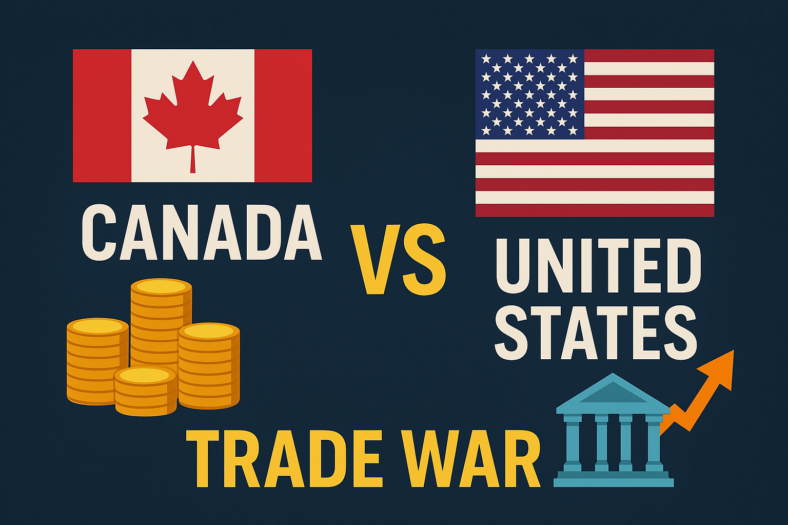Registered Retirement Savings Plans (RRSPs) stand as a cornerstone of retirement planning in Canada, offering individuals a tax-advantaged vehicle to save for their golden years. These investment accounts allow Canadians to contribute a portion of their income each year, with contributions deducted from taxable income, potentially leading to significant tax savings. RRSPs come with a variety of investment options, ranging from stocks and bonds to mutual funds and GICs, catering to diverse risk appetites and financial goals. As one of the most popular retirement savings tools, understanding the intricacies of RRSPs can empower individuals to make informed decisions about their financial futures.
Editor’s Picks: Best RRSPs in Canada
Types of high-interest RRSPs
High-interest registered retirement savings plans (RRSPs) offer individuals the opportunity to maximize their retirement savings through accounts that provide attractive interest rates. These plans come in various forms, each tailored to different investor needs and preferences:
- High-Interest Savings Accounts (HISAs) within RRSPs: Many financial institutions offer RRSP-compatible savings accounts that provide competitive interest rates. These accounts provide a secure way to grow retirement savings while maintaining easy access to funds.
- Fixed-Income Investments: RRSPs also accommodate fixed-income investments such as Guaranteed Investment Certificates (GICs) and bonds. GICs offer a predetermined interest rate over a specific term, providing stability and predictable returns within the RRSP framework.
- High-Yield Bonds and Bond Funds: Investors seeking higher returns may opt for high-yield bonds or bond funds within their RRSPs. These investments typically offer higher interest rates than government bonds but come with increased risk. Bond funds provide diversification by investing in a portfolio of bonds.
- Dividend-Paying Stocks: Some investors include dividend-paying stocks in their RRSPs to benefit from both capital appreciation and regular income. Dividend stocks from stable companies with a history of consistent payouts can offer attractive yields while potentially providing growth opportunities.
- Real Estate Investment Trusts (REITs): REITs allow investors to gain exposure to real estate assets without directly owning property. Within RRSPs, REITs can provide high yields through rental income and potential capital appreciation, offering a unique way to diversify retirement portfolios.
- Balanced Funds: Balanced funds, also known as asset allocation or target-date funds, combine a mix of stocks, bonds, and other assets within a single investment vehicle. These funds are designed to provide both income and growth potential while automatically adjusting the asset allocation based on the investor’s time horizon and risk tolerance.
Understanding the features and risks associated with each type of high-interest RRSP is crucial for investors to make informed decisions aligned with their financial goals and risk tolerance levels.
What is a high-interest RRSP
A high-interest registered retirement savings plan (RRSP) is a type of retirement savings account that offers competitive interest rates on the funds deposited within it. RRSPs are a tax-advantaged vehicle offered by the Canadian government to help individuals save for retirement. Contributions made to an RRSP are tax-deductible, meaning they can reduce the amount of income tax owed in the year of contribution.
High-interest RRSPs typically refer to RRSPs that offer interest rates higher than those available in standard savings accounts or other investment vehicles. These accounts can include various types of investments such as high-yield savings accounts, Guaranteed Investment Certificates (GICs), bonds, dividend-paying stocks, and other interest-bearing securities. The goal of a high-interest RRSP is to provide investors with the opportunity to earn attractive returns on their retirement savings while benefiting from the tax advantages of the RRSP structure.
Investors should carefully consider their risk tolerance, investment goals, and time horizon when choosing a high-interest RRSP, as different types of investments within the account may carry varying levels of risk and return potential. Additionally, contribution limits and withdrawal restrictions imposed by the government should be taken into account to maximize the benefits of the RRSP over the long term.
Common high-interest RRSP fees
High-interest registered retirement savings plans (RRSPs) typically come with fees that vary depending on the financial institution, investment products, and services offered. Common fees associated with high-interest RRSPs may include:
- Administration Fees: These fees cover the cost of maintaining the RRSP account, including record-keeping, statements, and customer service. They are usually charged annually or on a monthly basis.
- Transaction Fees: Some RRSP providers charge fees for specific transactions, such as buying or selling securities within the account, transferring funds, or making changes to the investment portfolio. These fees may be flat-rate or based on a percentage of the transaction amount.
- Management Fees: If you invest in mutual funds, exchange-traded funds (ETFs), or other professionally managed investment products within your RRSP, you may be subject to management fees. These fees compensate the fund manager for overseeing the investments and are typically expressed as an annual percentage of assets under management (MER – Management Expense Ratio).
- Advisor Fees: If you receive financial advice or guidance from a professional advisor, they may charge advisory fees for their services. These fees can be charged as a percentage of assets under management, a flat fee, or hourly rate.
- Trading Commissions: If you trade individual stocks, bonds, or other securities within your RRSP, you may incur trading commissions or brokerage fees. These fees are charged by the brokerage firm for executing trades on your behalf.
- Transfer-Out Fees: If you decide to transfer your RRSP funds to another financial institution, the current RRSP provider may charge a transfer-out fee. This fee covers the administrative costs associated with closing the account and transferring the assets.
- Inactivity Fees: Some RRSP providers may charge fees if there is no activity in the account over a certain period. This fee is designed to encourage account holders to actively manage their investments.
It’s essential to review the fee schedule and terms and conditions provided by your RRSP provider carefully to understand the costs associated with your account fully. Minimizing fees can help maximize the growth of your retirement savings over time.
Common features that high-interest RRSPs have?
High-interest registered retirement savings plans (RRSPs) offer several common features designed to help individuals save for retirement while enjoying tax advantages. Some of these features include:
- Tax Deductible Contributions: Contributions made to an RRSP are tax-deductible, meaning they can be used to reduce taxable income for the year in which they are made. This feature provides immediate tax savings, as contributions are deducted from the individual’s total income before calculating taxes owed.
- Tax-Deferred Growth: Within an RRSP, investments grow tax-deferred, meaning investors do not pay taxes on investment gains as long as the funds remain within the RRSP. This allows investments to compound over time, potentially leading to significant growth over the long term.
- Wide Range of Investment Options: High-interest RRSPs typically offer a diverse range of investment options to suit different risk tolerances, investment goals, and time horizons. These options may include high-interest savings accounts, Guaranteed Investment Certificates (GICs), bonds, mutual funds, exchange-traded funds (ETFs), stocks, and other securities.
- Flexible Contribution Limits: RRSP contribution limits are based on a percentage of the individual’s earned income, up to a maximum limit set by the government. This provides flexibility for individuals to contribute according to their financial situation and retirement savings goals. Unused contribution room can be carried forward to future years.
- Spousal RRSPs: Spousal RRSPs allow higher-earning individuals to contribute to an RRSP in their spouse’s name, providing income-splitting opportunities in retirement. This can help equalize retirement income and reduce overall taxes owed in retirement.
- Ability to Borrow for Homeownership: The Home Buyers’ Plan (HBP) allows first-time homebuyers to withdraw up to a specified amount from their RRSPs to purchase a home without incurring taxes. This feature provides an opportunity to use RRSP savings to facilitate homeownership while maintaining tax advantages.
- Lifetime Retirement Income Options: Upon retirement, RRSP holders have several options for converting their savings into retirement income, including purchasing an annuity, converting to a Registered Retirement Income Fund (RRIF), or withdrawing funds as needed. Each option comes with its own tax implications and considerations.
Understanding these common features can help individuals make informed decisions when selecting and managing their high-interest RRSPs to optimize their retirement savings and tax advantages.
Why should you choose a high-interest RRSP
Choosing a high-interest registered retirement savings plan (RRSP) can offer several advantages that make it an attractive option for saving for retirement:
- Tax Advantages: RRSP contributions are tax-deductible, meaning they can be used to reduce taxable income for the year in which they are made. This provides immediate tax savings, as contributions lower the amount of income tax owed. Additionally, investments within an RRSP grow tax-deferred, allowing for compounded growth over time without the burden of annual taxes on investment gains.
- Higher Returns: High-interest RRSPs typically offer competitive interest rates or returns compared to standard savings accounts or other investment vehicles. By earning higher returns on invested funds, individuals can accelerate the growth of their retirement savings over time, potentially achieving their retirement goals sooner.
- Diverse Investment Options: High-interest RRSPs often provide a wide range of investment options, including high-yield savings accounts, Guaranteed Investment Certificates (GICs), bonds, mutual funds, stocks, and other securities. This diversity allows individuals to tailor their investment portfolio to their risk tolerance, investment goals, and time horizon, maximizing the potential for growth while managing risk.
- Retirement Savings Discipline: Contributing to a high-interest RRSP encourages disciplined saving for retirement by setting aside funds regularly. Automatic contributions can be set up to transfer funds from a bank account or paycheck directly into the RRSP, making it easy to prioritize retirement savings and build wealth over time.
- Flexibility and Accessibility: While RRSPs are designed for long-term retirement savings, they also offer flexibility and accessibility. RRSP holders can access their funds for certain purposes, such as the Home Buyers’ Plan (HBP) for first-time homebuyers or the Lifelong Learning Plan (LLP) for education expenses, without incurring taxes or penalties. Additionally, unused RRSP contribution room can be carried forward to future years, providing flexibility to catch up on contributions or optimize tax planning strategies.
- Income Splitting: Spousal RRSPs allow higher-earning individuals to contribute to an RRSP in their spouse’s name, providing income-splitting opportunities in retirement. This can help equalize retirement income and reduce overall taxes owed in retirement, maximizing after-tax retirement income for couples.
By considering these factors, individuals can make an informed decision to choose a high-interest RRSP as part of their retirement savings strategy, leveraging its tax advantages, higher returns, investment options, and flexibility to build a secure financial future.
Benefits of a high-interest RRSP
A high-interest registered retirement savings plan (RRSP) offers numerous benefits that make it an attractive option for individuals planning for retirement:
- Tax Advantages: RRSP contributions are tax-deductible, meaning they reduce taxable income for the year in which they are made. This results in immediate tax savings, as contributions lower the amount of income tax owed. Additionally, investments within an RRSP grow tax-deferred, allowing for compounded growth over time without the burden of annual taxes on investment gains.
- Higher Returns: High-interest RRSPs typically offer competitive interest rates or returns compared to standard savings accounts or other investment vehicles. By earning higher returns on invested funds, individuals can accelerate the growth of their retirement savings over time, potentially achieving their retirement goals sooner.
- Diverse Investment Options: High-interest RRSPs often provide a wide range of investment options, including high-yield savings accounts, Guaranteed Investment Certificates (GICs), bonds, mutual funds, stocks, and other securities. This diversity allows individuals to tailor their investment portfolio to their risk tolerance, investment goals, and time horizon, maximizing the potential for growth while managing risk.
- Retirement Savings Discipline: Contributing to a high-interest RRSP encourages disciplined saving for retirement by setting aside funds regularly. Automatic contributions can be set up to transfer funds from a bank account or paycheck directly into the RRSP, making it easy to prioritize retirement savings and build wealth over time.
- Flexibility and Accessibility: While RRSPs are designed for long-term retirement savings, they also offer flexibility and accessibility. RRSP holders can access their funds for certain purposes, such as the Home Buyers’ Plan (HBP) for first-time homebuyers or the Lifelong Learning Plan (LLP) for education expenses, without incurring taxes or penalties. Additionally, unused RRSP contribution room can be carried forward to future years, providing flexibility to catch up on contributions or optimize tax planning strategies.
- Income Splitting: Spousal RRSPs allow higher-earning individuals to contribute to an RRSP in their spouse’s name, providing income-splitting opportunities in retirement. This can help equalize retirement income and reduce overall taxes owed in retirement, maximizing after-tax retirement income for couples.
By considering these factors, individuals can make an informed decision to utilize a high-interest RRSP as part of their retirement savings strategy, leveraging its tax advantages, higher returns, investment options, and flexibility to build a secure financial future.
Downsides of a high-interest RRSP
While high-interest registered retirement savings plans (RRSPs) offer numerous benefits, there are also some potential downsides to consider:
- Tax Implications upon Withdrawal: Contributions to RRSPs are tax-deductible, but withdrawals are considered taxable income. When retirees start withdrawing funds from their RRSPs in retirement, they may face higher taxes if their income tax bracket remains the same or increases. This can reduce the after-tax value of RRSP withdrawals compared to contributions.
- Contribution Limits and Penalties: RRSPs have annual contribution limits based on a percentage of earned income, up to a maximum limit set by the government. Exceeding these limits can result in penalties, including over-contribution penalties and additional taxes. It’s crucial to monitor contributions carefully to avoid these penalties.
- Loss of Contribution Room: Unused RRSP contribution room can be carried forward to future years, but once funds are withdrawn, the contribution room is lost. This can limit the ability to catch up on contributions or take advantage of tax-deferred growth opportunities in the future.
- Limited Accessibility: RRSPs are designed for long-term retirement savings, and there are restrictions on accessing funds before retirement age. Withdrawals made before retirement may be subject to withholding taxes and early withdrawal penalties, reducing the after-tax value of the withdrawal.
- Investment Risk: While RRSPs offer a range of investment options, including high-interest savings accounts and low-risk fixed-income investments, there is still inherent investment risk, particularly for investments in stocks, mutual funds, and other securities. Market fluctuations can impact the value of investments within the RRSP, potentially leading to losses.
- Mandatory Withdrawals: RRSP holders are required to convert their RRSPs into Registered Retirement Income Funds (RRIFs) or purchase annuities by a certain age (currently 71 in Canada). Mandatory withdrawals from RRIFs are subject to minimum withdrawal requirements, which can affect retirement income planning and tax obligations.
- Loss of Government Benefits: Withdrawals from RRSPs can affect eligibility for government benefits such as Old Age Security (OAS) and Guaranteed Income Supplement (GIS), as these benefits are income-tested. High-income retirees who make large RRSP withdrawals may see a reduction or clawback of these benefits.
Considering these downsides alongside the benefits of RRSPs can help individuals make informed decisions about how to best utilize these retirement savings vehicles within their overall financial planning strategy.
How to choose a high-interest RRSP
Choosing the right high-interest registered retirement savings plan (RRSP) requires careful consideration of several factors to align with your financial goals, risk tolerance, and retirement objectives. Here’s a step-by-step guide to help you choose the best high-interest RRSP for your needs:
- Understand Your Retirement Goals: Start by clarifying your retirement goals, including your desired retirement age, lifestyle, and income needs. Determine how much you’ll need to save for retirement based on your expected expenses and lifestyle preferences.
- Assess Your Risk Tolerance: Consider your risk tolerance and investment preferences. High-interest RRSPs offer various investment options with different levels of risk and return potential. Determine how comfortable you are with market fluctuations and volatility to choose appropriate investments.
- Research RRSP Providers: Research financial institutions and RRSP providers to compare their offerings, including interest rates, fees, investment options, and customer service. Look for providers that offer competitive interest rates, low fees, a wide range of investment choices, and reliable customer support.
- Evaluate Investment Options: Assess the investment options available within each RRSP, such as high-interest savings accounts, Guaranteed Investment Certificates (GICs), bonds, mutual funds, stocks, and exchange-traded funds (ETFs). Choose investments that align with your risk tolerance, time horizon, and retirement goals.
- Consider Contribution Limits: Review the RRSP contribution limits set by the government and consider how much you can contribute annually based on your income. Maximize your contributions to take advantage of tax deductions and tax-deferred growth opportunities within the RRSP.
- Compare Interest Rates and Returns: Compare the interest rates or expected returns offered by different high-interest RRSPs. Look for accounts or investment products with competitive rates that will help your retirement savings grow faster over time.
- Review Fees and Charges: Pay attention to any fees or charges associated with the high-interest RRSP, including administration fees, transaction fees, management fees, and trading commissions. Choose RRSPs with transparent fee structures and low-cost investment options to minimize expenses.
- Consider Additional Features: Evaluate any additional features or benefits offered by the RRSP provider, such as online account access, mobile banking, retirement planning tools, and educational resources. Choose a provider that offers convenient account management and valuable support services.
- Seek Professional Advice: Consider seeking advice from a financial advisor or retirement planning expert to help you evaluate your options, assess your retirement readiness, and develop a personalized RRSP strategy tailored to your needs and circumstances.
- Monitor and Review Regularly: Once you’ve chosen a high-interest RRSP, regularly monitor your account performance, review your investment portfolio, and adjust your contributions or investment strategy as needed to stay on track toward your retirement goals.
By following these steps and conducting thorough research, you can choose a high-interest RRSP that aligns with your financial objectives and helps you build a secure retirement savings nest egg.
How to open a high-interest RRSP
Opening a high-interest registered retirement savings plan (RRSP) typically involves several straightforward steps. Here’s a general guide to help you navigate the process:
- Research RRSP Providers: Start by researching financial institutions and RRSP providers to compare their offerings, including interest rates, fees, investment options, and customer service. Look for providers that offer competitive rates and a wide range of investment choices.
- Choose a Provider: Based on your research, select a RRSP provider that best meets your needs and preferences. Consider factors such as interest rates, fees, investment options, customer reviews, and the provider’s reputation.
- Gather Required Documents: Before opening an RRSP, you’ll need to gather the necessary documents, which typically include:
- Proof of identity (e.g., government-issued ID such as a driver’s license or passport).
- Proof of address (e.g., utility bill or bank statement).
- Social Insurance Number (SIN) or Taxpayer Identification Number (TIN).
- Employment and income information.
- Contact the Provider: Reach out to your chosen RRSP provider to initiate the account opening process. This can usually be done through various channels such as the provider’s website, phone, or in-person at a branch location.
- Complete Application Forms: The RRSP provider will provide you with application forms or an online application process to complete. Fill out the required information accurately and thoroughly, including personal details, contact information, and investment preferences.
- Review and Sign Documents: Carefully review all documents related to the RRSP account, including terms and conditions, account agreements, and any disclosures. Ensure that you understand the features, fees, and investment options associated with the account before signing.
- Fund the Account: Once your RRSP account is opened, you’ll need to fund it with an initial contribution. This can typically be done through various methods such as electronic funds transfer (EFT), cheque deposit, or transferring funds from another RRSP or investment account.
- Select Investments: Decide how you want to invest the funds within your RRSP based on your risk tolerance, investment goals, and time horizon. You may choose from options such as high-interest savings accounts, Guaranteed Investment Certificates (GICs), bonds, mutual funds, stocks, and exchange-traded funds (ETFs).
- Set Up Contributions: Consider setting up automatic contributions to your RRSP to ensure regular savings and take advantage of dollar-cost averaging. This can usually be arranged through your RRSP provider’s online banking platform or by contacting customer service.
- Monitor Your Account: Once your RRSP is open and funded, regularly monitor your account performance, review your investment portfolio, and make adjustments as needed to stay on track toward your retirement goals.
By following these steps, you can open a high-interest RRSP and start building your retirement savings with confidence. If you’re unsure about any aspect of the process, don’t hesitate to reach out to your RRSP provider for assistance.
How does a high-interest RRSP work?
A high-interest registered retirement savings plan (RRSP) is a tax-advantaged investment account designed to help individuals save for retirement. Here’s how it works:
- Tax Deductible Contributions: Individuals can contribute a portion of their earned income to their RRSP each year, up to their contribution limit. Contributions are tax-deductible, meaning they reduce the individual’s taxable income for the year in which they are made. This provides immediate tax savings by lowering the amount of income tax owed.
- Tax-Deferred Growth: Within the RRSP, investments grow tax-deferred, meaning investors do not pay taxes on investment gains as long as the funds remain within the RRSP. This allows investments to compound over time without the burden of annual taxes on investment income. Taxes are only paid when funds are withdrawn from the RRSP, typically in retirement when the individual may be in a lower tax bracket.
- Wide Range of Investment Options: RRSPs offer a diverse range of investment options, including high-interest savings accounts, Guaranteed Investment Certificates (GICs), bonds, mutual funds, stocks, and exchange-traded funds (ETFs). Investors can choose investments based on their risk tolerance, investment goals, and time horizon.
- Contribution Limits: RRSP contributions are subject to annual contribution limits set by the government, based on a percentage of earned income. Contribution limits are cumulative and unused contribution room can be carried forward to future years. Exceeding contribution limits may result in penalties and taxes.
- Flexible Withdrawals: While RRSPs are intended for long-term retirement savings, investors can access their funds before retirement for certain purposes, such as the Home Buyers’ Plan (HBP) for first-time homebuyers or the Lifelong Learning Plan (LLP) for education expenses. However, withdrawals are subject to withholding taxes and may be subject to early withdrawal penalties.
- Mandatory Conversion: By the end of the year in which the RRSP holder turns 71, the RRSP must be converted into a Registered Retirement Income Fund (RRIF) or used to purchase an annuity. Mandatory withdrawals from RRIFs are subject to minimum withdrawal requirements, which increase with age.
- Tax Implications upon Withdrawal: Withdrawals from RRSPs are considered taxable income in the year they are withdrawn. Taxes are withheld at source by the financial institution, and the amount withheld depends on the size of the withdrawal.
Overall, a high-interest RRSP provides individuals with a tax-efficient way to save for retirement while benefiting from tax-deferred growth and a wide range of investment options. It’s essential to understand the rules and regulations governing RRSPs to maximize their benefits and avoid potential pitfalls.
What investments can I hold in my RRSP?
Registered Retirement Savings Plans (RRSPs) offer a wide range of investment options to help individuals build their retirement savings. Here are some common investments that you can hold within an RRSP:
- High-Interest Savings Accounts: RRSP-compatible savings accounts offer competitive interest rates, providing a secure way to grow your retirement savings while maintaining liquidity.
- Guaranteed Investment Certificates (GICs): GICs offer a fixed rate of return over a specified term, providing capital preservation and predictable returns within the RRSP framework.
- Bonds: Government bonds, corporate bonds, and other fixed-income securities can be held within an RRSP to generate income and provide stability to your investment portfolio.
- Mutual Funds: Mutual funds pool money from multiple investors to invest in a diversified portfolio of stocks, bonds, or other securities. They offer professional management and diversification within the RRSP.
- Exchange-Traded Funds (ETFs): ETFs are similar to mutual funds but trade on stock exchanges like individual stocks. They offer low costs, diversification, and flexibility within the RRSP.
- Individual Stocks: Investors can purchase shares of individual companies to build wealth and potentially earn capital gains and dividends within their RRSPs.
- Real Estate Investment Trusts (REITs): REITs allow investors to gain exposure to real estate assets without directly owning property. They can provide regular income and potential capital appreciation within an RRSP.
- Annuities: Annuities provide guaranteed income payments for life or a specified period, offering a secure way to generate retirement income within the RRSP.
- Cash Equivalents: Short-term investments such as money market funds or Treasury bills provide liquidity and stability within an RRSP.
- Alternative Investments: Some RRSP providers offer alternative investments such as private equity, hedge funds, or precious metals for investors seeking diversification beyond traditional asset classes.
When choosing investments for your RRSP, consider factors such as your risk tolerance, investment goals, time horizon, and diversification needs. It’s essential to review and monitor your investment portfolio regularly to ensure it remains aligned with your financial objectives and retirement plan. Additionally, seek professional advice from a financial advisor to help you make informed investment decisions within your RRSP.
How much can I contribute to my RRSP?
The amount you can contribute to your Registered Retirement Savings Plan (RRSP) is subject to annual contribution limits set by the Canadian government. Contribution limits are calculated based on your earned income and are subject to certain rules and maximum thresholds.
As of the 2022 tax year, the RRSP contribution limit is 18% of your earned income from the previous year, up to a maximum limit set by the government. The maximum limit for the 2022 tax year is $29,210. However, it’s essential to note that this limit is subject to change each year based on inflation and other factors.
In addition to the annual contribution limit, any unused contribution room from previous years can be carried forward indefinitely. You can find your available RRSP contribution room on your Notice of Assessment from the Canada Revenue Agency (CRA) or by logging into your CRA My Account online.
It’s important to be mindful of contribution limits to avoid penalties and taxes. Exceeding your RRSP contribution limit can result in a tax penalty of 1% per month on the excess amount until it’s withdrawn or applied to future years’ contribution room.
If you’re unsure about your RRSP contribution limit or have questions about maximizing your contributions, consider consulting with a financial advisor or tax professional who can provide personalized guidance based on your financial situation and retirement goals.
How do the RRSP contribution carry forward rules work?
The RRSP contribution carry forward rules allow individuals to carry forward any unused contribution room from previous years and apply it to future years. Here’s how these rules work:
- Determining Unused Contribution Room: Each year, individuals accumulate RRSP contribution room based on their earned income. The annual contribution limit is calculated as 18% of earned income from the previous year, up to a maximum limit set by the government. If you do not contribute the maximum allowable amount in a given year, the unused contribution room is carried forward to future years.
- Tracking Unused Contribution Room: The Canada Revenue Agency (CRA) keeps track of your unused RRSP contribution room and reports it on your Notice of Assessment (NOA) after you file your taxes each year. You can also view your RRSP contribution room through your CRA My Account online.
- Carrying Forward Unused Contribution Room: Unused RRSP contribution room can be carried forward indefinitely, allowing individuals to catch up on contributions in future years when they may have more financial flexibility. This flexibility is particularly useful for individuals who are unable to maximize their contributions in a given year due to financial constraints.
- Using Carry Forward Room: When you’re ready to make RRSP contributions in a future year, you can use your available carry forward room to contribute more than the annual contribution limit for that year. This can help you maximize your contributions and take advantage of tax-deferred growth opportunities within the RRSP.
- Avoiding Contribution Overages: It’s important to be mindful of contribution limits and avoid exceeding them to prevent penalties and taxes. Exceeding your RRSP contribution limit can result in a tax penalty of 1% per month on the excess amount until it’s withdrawn or applied to future years’ contribution room.
By understanding the RRSP contribution carry forward rules, individuals can effectively manage their RRSP contributions and take advantage of unused contribution room to maximize their retirement savings over time. If you have questions about your RRSP contribution room or how to utilize carry forward room, consider consulting with a financial advisor or tax professional for personalized guidance.
What are spousal RRSPs and how do they work?
Spousal Registered Retirement Savings Plans (RRSPs) are a tax-efficient retirement savings strategy that allows higher-income individuals to contribute to an RRSP in their spouse’s name. Here’s how they work:
- Contributions by the Higher-Income Spouse: In a spousal RRSP arrangement, the higher-income spouse makes contributions to an RRSP that is registered in the name of their lower-income spouse. The contributions are made using the higher-income spouse’s income and are tax-deductible for the higher-income spouse.
- Tax Benefits for the Higher-Income Spouse: By making contributions to a spousal RRSP, the higher-income spouse can reduce their taxable income for the year, potentially resulting in lower income taxes. This is because RRSP contributions are tax-deductible and reduce the amount of income subject to taxation.
- Income Splitting in Retirement: The primary benefit of spousal RRSPs occurs in retirement when withdrawals are made from the RRSP. Since the RRSP is registered in the name of the lower-income spouse, withdrawals are taxed at their lower tax rate, reducing the overall tax burden on the retirement income.
- Equalizing Retirement Income: Spousal RRSPs allow couples to equalize their retirement income by spreading out retirement savings between both spouses. This can help optimize tax planning strategies and maximize after-tax retirement income for the household.
- Withdrawal Restrictions: Withdrawals from a spousal RRSP are subject to the same rules and restrictions as regular RRSPs. Withdrawals are considered taxable income for the recipient spouse in the year they are withdrawn, and early withdrawals may be subject to withholding taxes and penalties.
- Attribution Rules: It’s important to be aware of attribution rules that apply to spousal RRSPs. These rules prevent the higher-income spouse from circumventing income-splitting by contributing to the lower-income spouse’s RRSP and then withdrawing the funds shortly afterward. Any withdrawals made from a spousal RRSP within three calendar years of a contribution are attributed back to the higher-income spouse and taxed accordingly.
Overall, spousal RRSPs are a valuable tool for couples to optimize their retirement savings and tax planning strategies by equalizing retirement income and taking advantage of lower tax rates. It’s essential to carefully consider the implications of spousal RRSP contributions and withdrawals and consult with a financial advisor or tax professional to ensure they align with your overall financial goals and objectives.
What is the RRSP deadline?
The RRSP deadline refers to the deadline for making contributions to a Registered Retirement Savings Plan (RRSP) for the purpose of claiming tax deductions on your income tax return for the current tax year. In Canada, the RRSP deadline typically falls on the same day each year, which is 60 days into the following calendar year.
Specifically, the RRSP contribution deadline for the current tax year is usually March 1st of the following year. For example, if you want to make RRSP contributions that you can deduct on your tax return for the 2023 tax year, the deadline to make those contributions would be March 1, 2024.
It’s important to note that the RRSP contribution deadline may vary slightly if March 1st falls on a weekend or a holiday. In such cases, the deadline is typically extended to the next business day.
Contributions made to an RRSP after the deadline will count toward your contribution room for the following tax year but cannot be deducted on your tax return for the current tax year. Therefore, it’s advisable to make RRSP contributions well before the deadline to ensure you can take advantage of tax deductions for the current tax year.
It’s essential to be aware of the RRSP deadline and plan your contributions accordingly to maximize the tax benefits of your RRSP and optimize your retirement savings strategy. If you have questions about RRSP contribution deadlines or tax planning, consider consulting with a financial advisor or tax professional for personalized guidance.
Can you withdraw your RRSP early before retirement?
Yes, you can withdraw funds from your Registered Retirement Savings Plan (RRSP) before retirement, but doing so may have tax consequences and other considerations. Here’s what you need to know about early RRSP withdrawals:
- Withholding Taxes: Withdrawals from an RRSP are considered taxable income in the year they are withdrawn. The financial institution holding your RRSP is required to withhold taxes on the amount withdrawn, depending on the size of the withdrawal:
- Up to $5,000: 10% withholding tax
- $5,001 to $15,000: 20% withholding tax
- Over $15,000: 30% withholding tax
- Additional Taxes: In addition to withholding taxes, the amount withdrawn from your RRSP is added to your taxable income for the year. Depending on your total income and tax bracket, you may owe additional taxes when you file your tax return for the year of withdrawal.
- Impact on Retirement Savings: Withdrawing funds from your RRSP early can impact your retirement savings goals, as the funds may no longer be available to grow tax-deferred within the RRSP until retirement. This can reduce the long-term growth potential of your retirement savings.
- Loss of Contribution Room: Withdrawals from an RRSP do not create additional contribution room. Once funds are withdrawn, the contribution room is lost, and you cannot recontribute the withdrawn amount to your RRSP in the future.
- Special Programs: There are specific programs that allow early withdrawals from an RRSP for certain purposes without incurring taxes or penalties, such as the Home Buyers’ Plan (HBP) for first-time homebuyers and the Lifelong Learning Plan (LLP) for education expenses. However, there are strict eligibility criteria and repayment requirements associated with these programs.
- Emergency Withdrawals: In some cases of financial hardship or unexpected expenses, you may need to make an early withdrawal from your RRSP. While this is an option, it’s essential to consider the tax implications and explore alternative sources of funds first.
Overall, while early withdrawals from an RRSP are possible, they should be carefully considered due to the tax consequences and potential impact on your retirement savings. It’s advisable to consult with a financial advisor or tax professional before making an early RRSP withdrawal to understand the implications and explore alternative solutions.
Who’s eligible for a high-interest RRSP
Eligibility for a high-interest registered retirement savings plan (RRSP) in Canada is generally based on the following criteria:
- Residency Status: To open an RRSP, you must be a resident of Canada for tax purposes. This typically means that you have a permanent home in Canada or significant residential ties to the country.
- Age Requirement: There is no minimum age requirement to contribute to an RRSP, but you must have earned income (employment income, self-employment income, or rental income) to contribute. However, there is a maximum age limit for contributing to an RRSP, which is the end of the year in which you turn 71. At that point, your RRSP must be converted into a Registered Retirement Income Fund (RRIF) or used to purchase an annuity.
- Earned Income: You must have earned income (such as employment income, self-employment income, or rental income) to contribute to an RRSP. The contribution limit is based on your earned income from the previous year, up to a maximum limit set by the government.
- Contribution Room: You must have available contribution room within your RRSP to make contributions. Contribution room is determined based on your earned income and any unused contribution room carried forward from previous years.
- Tax-Filing Status: While contributing to an RRSP is not dependent on filing taxes, claiming tax deductions for RRSP contributions requires filing a tax return with the Canada Revenue Agency (CRA). Non-residents of Canada for tax purposes are generally not eligible to contribute to an RRSP.
- Financial Institution Requirements: Individual financial institutions may have their own eligibility criteria for opening a high-interest RRSP account, such as minimum account balances or residency requirements.
Overall, as long as you meet the residency, age, earned income, and contribution room requirements, you are generally eligible to open and contribute to a high-interest RRSP in Canada. It’s essential to review the specific eligibility criteria of the financial institution offering the RRSP to ensure you meet their requirements and understand any terms and conditions associated with the account.
What are alternatives to high-interest RRSPs
Several alternatives to high-interest registered retirement savings plans (RRSPs) exist, each with its own features, benefits, and considerations. Here are some common alternatives:
- Tax-Free Savings Accounts (TFSAs): TFSAs are flexible, tax-advantaged accounts that allow individuals to save and invest money without paying taxes on investment gains or withdrawals. Contributions to TFSAs are not tax-deductible, but investment growth within the account is tax-free. TFSAs can be used for various savings goals, including retirement, emergency funds, or short-term savings.
- Employer-Sponsored Retirement Plans: Many employers offer retirement savings plans, such as Registered Pension Plans (RPPs) or Group Registered Retirement Savings Plans (Group RRSPs), as part of their employee benefits package. These plans often include employer contributions, which can enhance retirement savings. Employees can contribute to these plans through payroll deductions, and contributions are often tax-deductible.
- Non-Registered Investment Accounts: Non-registered investment accounts offer flexibility and accessibility for investing in stocks, bonds, mutual funds, ETFs, and other securities outside of registered accounts like RRSPs and TFSAs. While contributions to non-registered accounts are not tax-deductible, investment gains are subject to capital gains tax upon withdrawal. Non-registered accounts can complement registered accounts by providing additional investment options and liquidity.
- Real Estate Investments: Real estate investments, such as rental properties or Real Estate Investment Trusts (REITs), can provide long-term growth potential and income generation outside of traditional investment accounts. Real estate investments offer diversification benefits and can be used to build wealth over time, but they also require ongoing management and may involve higher risks and costs.
- Pension Plans: Pension plans, including defined benefit plans and defined contribution plans, provide retirement income benefits to employees based on years of service, salary, and contributions. Pension plans are typically sponsored by employers and offer a guaranteed income stream in retirement, but they may have limited flexibility and portability compared to individual retirement accounts.
- Annuities: Annuities are financial products that provide guaranteed income payments for life or a specified period in exchange for a lump-sum payment or series of contributions. Annuities can be purchased from insurance companies and offer protection against longevity risk, but they may have limited liquidity and growth potential compared to other investment options.
- Education Savings Plans (RESPs): RESPs are tax-advantaged accounts designed to save for a child’s post-secondary education. Contributions to RESPs are not tax-deductible, but investment growth is tax-deferred, and withdrawals are taxed in the hands of the student, who typically has a lower tax rate. RESP contributions may qualify for government grants and incentives, such as the Canada Education Savings Grant (CESG).
When considering alternatives to high-interest RRSPs, it’s essential to assess your individual financial goals, risk tolerance, time horizon, and tax situation to determine the most suitable investment options for your needs. Consulting with a financial advisor or investment professional can help you evaluate your options and develop a personalized investment strategy.
FAQs about high-interest registered retirement savings plans in Canada
A high-interest RRSP is a type of registered retirement savings plan that offers competitive interest rates on contributions. It provides tax advantages for retirement savings, allowing individuals to contribute pre-tax income and grow their investments tax-deferred until retirement.
The primary difference between a high-interest RRSP and a regular RRSP lies in the interest rates offered on contributions. High-interest RRSPs typically provide higher interest rates compared to standard savings accounts or other investment options within an RRSP.
Eligibility for a high-interest RRSP is generally based on the same criteria as regular RRSPs. Individuals must be residents of Canada for tax purposes, have earned income, and have available contribution room within their RRSPs.
The benefits of a high-interest RRSP include competitive interest rates, tax advantages for retirement savings, a wide range of investment options, and the ability to grow investments tax-deferred until retirement.
The contribution limit for a high-interest RRSP is the same as the contribution limit for regular RRSPs, which is typically 18% of earned income from the previous year, up to a maximum limit set by the government. Unused contribution room can be carried forward to future years.
Withdrawals from a high-interest RRSP are considered taxable income in the year they are withdrawn and are subject to withholding taxes. The amount withheld depends on the size of the withdrawal. Early withdrawals may also be subject to additional taxes and penalties.
Yes, you can transfer funds from another RRSP to a high-interest RRSP. This can be done through a direct transfer between financial institutions or by selling investments within the original RRSP and using the proceeds to fund the high-interest RRSP.
Yes, there may be fees associated with a high-interest RRSP, such as account maintenance fees, transaction fees, or management fees, depending on the financial institution and the specific terms of the account.
Yes, you can contribute to a high-interest RRSP even if you have a pension plan through your employer. However, your pension plan contributions may affect your RRSP contribution room, so it’s essential to consider both retirement savings vehicles in your overall financial plan.
To open a high-interest RRSP, you can contact a financial institution that offers these accounts, such as banks, credit unions, or investment firms. You’ll need to provide personal information, such as identification and employment details, and fund the account with an initial contribution.
In conclusion, navigating the realm of retirement planning in Canada can be complex, but understanding the nuances of high-interest registered retirement savings plans (RRSPs) is crucial for building a secure financial future. This comprehensive guide has provided insights into the benefits, features, eligibility criteria, and tax implications of high-interest RRSPs, empowering individuals to make informed decisions about their retirement savings strategy. Whether you’re just starting your journey or looking to optimize your existing RRSP holdings, leveraging the advantages of high-interest RRSPs can accelerate your path towards a comfortable retirement. With careful planning, disciplined saving, and prudent investment choices, you can maximize the growth potential of your retirement savings while enjoying the tax advantages and peace of mind that high-interest RRSPs offer.




















